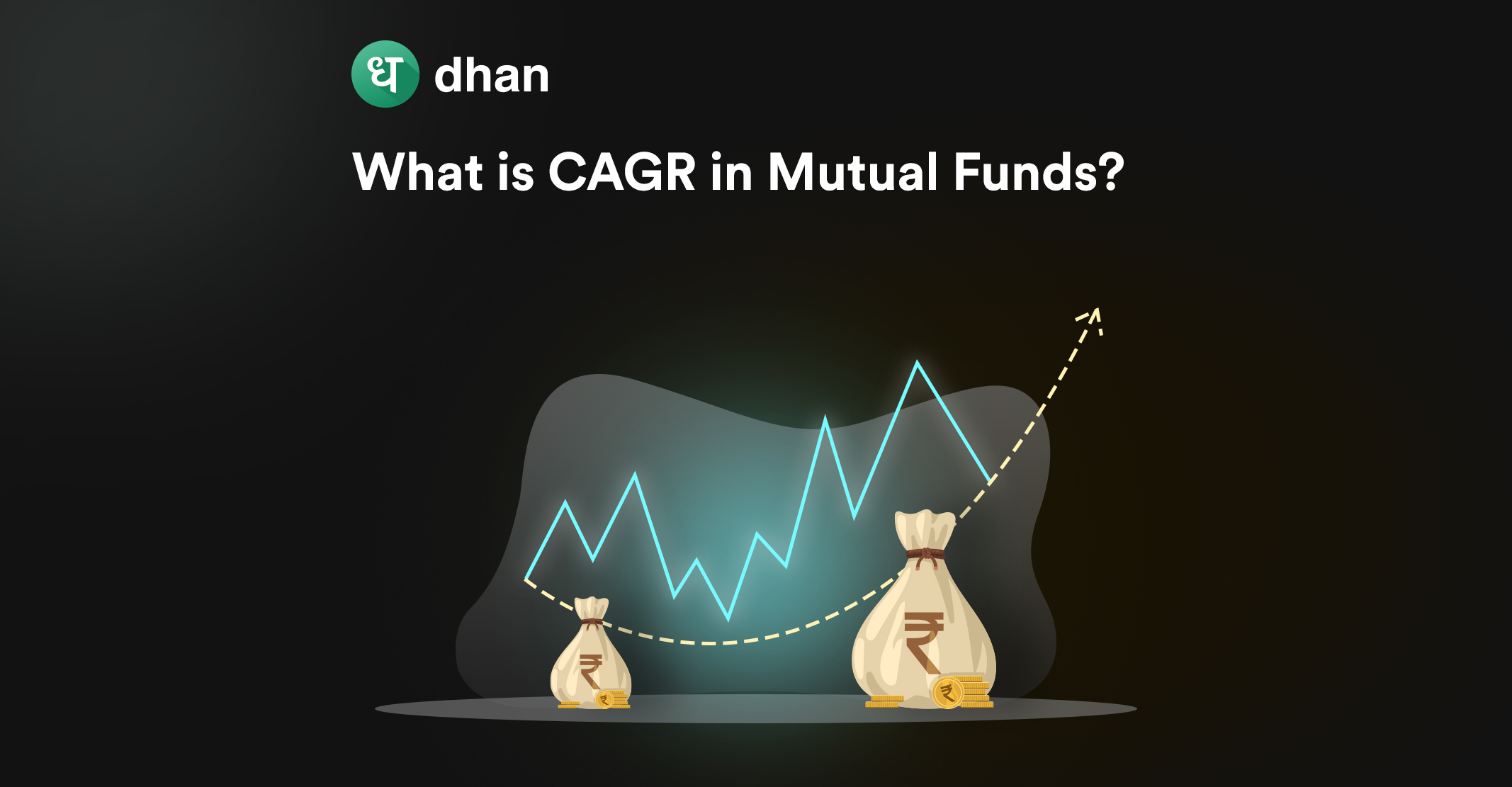CAGR or Compound Annual Growth Rate, is an important metric that outlines the overall performance of your investment, including mutual funds over time. It serves as a reliable indicator, offering insights into the consistency and sustainability of mutual fund returns.
Understanding how CAGR can help you understand the growth trajectory of your mutual fund portfolio. In this article, we’ll discuss what is CAGR in mutual funds, how it works, and how to calculate this metric for informed investment decisions.
What is CAGR in Mutual Funds?
Compounded Annual Growth Rate, or CAGR, serves as a metric for understanding the annual growth rate of an investment. When exploring what CAGR means in mutual funds, you need to consider the concept of compounding, where earned interest or returns are reinvested to generate further returns.
For instance, with an initial investment of Rs 1,000 yielding a 10% return in the first year, the reinvested profit of Rs 100 contributes to the base for subsequent growth.
As this cycle continues, the CAGR becomes a potent measure to know the return on mutual fund investments over the years through the compounding effect.
Why is CAGR Important?
CAGR stands out as a key metric in assessing the profitability of an investment, providing a glimpse into the average performance over a specific timeframe.
Short-term CAGR takes into account various factors influencing securities performance. On the other hand, long-term CAGR filters out short-term fluctuations, showcasing a security’s ability to rebound swiftly from market shocks.
This distinction helps investors in gauging the potential of companies, offering a clearer perspective on their growth prospects.
How Does CAGR Work?
CAGR simplifies complex investment performance into a single percentage, smoothing out fluctuations. It calculates the mean annual growth rate of an investment over a specified period, providing a more accurate representation of its true performance.
By considering the compounding effect, CAGR offers a clearer understanding of how a mutual fund investment would have grown if it had increased at a steady rate annually.
This helps comparisons between different mutual fund investment options, helping investors make more informed decisions about their portfolios.
Calculation of CAGR in Mutual Funds
The formula for calculating the Compound Annual Growth Rate (CAGR) for mutual funds is:
CAGR = (Ending Value / Beginning Value)^(1 / n) – 1
Where:
- Ending Value is the final value of the investment.
- Beginning Value is the initial investment amount.
- N is the Number of years
This formula provides the annualized rate of growth, offering a standardized measure to assess the investment’s performance over time.
How to Use a CAGR Calculator?
Calculating CAGR is helpful for investors to assess the true performance of their mutual fund investments over a specified period. To simplify this process, an online CAGR calculator provides a quick and efficient way to find the annual growth rate of an investment.
To use an online CAGR calculator, you typically input two key values: the initial investment amount (or starting value) and the final investment value (or ending value) over a specific time frame.

The CAGR calculator then computes the rate at which the investment has grown annually, taking into account the compounding effect. This rate is expressed as a percentage, providing investors with a clear picture of their investment’s average annual growth rate.

High CAGR Mutual Funds in India 2024
Here is the list of the highest CAGR mutual funds in India based on their 5-yr CAGR as of 25th Apr 2024.
| Mutual fund name | AUM (in Cr) | CAGR 5Y (%) | Expense Ratio (%) |
|---|---|---|---|
| Nippon India Large Cap Fund | 24,378.40 | 18.55 | 0.72 |
| HDFC Top 100 Fund | 27,687.12 | 16.30 | 0.30 |
| ICICI Prudential Bluechip Fund | 53,505.30 | 18.43 | 0.83 |
| Mahindra Manulife Large Cap Fund | 421.60 | 17.12 | 0.73 |
| SBI BlueChip Fund | 44,819.50 | 16.43 | 0.85 |
| Tata Large Cap Fund | 2,019.22 | 16.63 | 0.14 |
| Aditya Birla Sun Life Frontline Equity Fund | 26,877.60 | 35.95 | 1.01 |
Conclusion
Compound Annual Growth Rate is a crucial metric in evaluating the performance of mutual funds over time. It provides investors with a standardized measure to assess the annualized growth of their investments, smoothing out fluctuations. To make an informed decision, it is important to check the average CAGR of mutual funds in India before investing.
FAQs
What is a good CAGR for mutual funds?
A favorable CAGR for mutual funds varies based on investor goals and risk tolerance. Typically, a CAGR ranging from 12–15% is deemed satisfactory for equity mutual funds.
What does a 10% CAGR mean?
A 10% CAGR signifies earning 10% interest annually on the initial investment. This interest is reinvested, leading to a compounding effect, and you subsequently gain an additional 10% return on the total amount each year.
Is a CAGR of 5% good?
No, a CAGR of 5% is below average. However, it also means lower-risk investments.
Is 20% CAGR good?
Yes, a 20% CAGR is generally considered very good, indicating strong and consistent growth over the specified period. However, with high returns come high risks.
Can CAGR be used for SIP?
No, you cannot use CAGR for SIP. For that, you need to use XIRR.
What is the difference between ROI and CAGR?
ROI (Return on Investment) evaluates the profitability of an investment by comparing its return to its cost, while CAGR (Compound Annual Growth Rate) measures the mean annual growth rate of an investment over a specific period longer than one year, assuming exponential growth.
📌 You can also read:
- What is XIRR in Mutual Funds?
- What is Sharpe Ratio in Mutual Fund?
- What is CAN in Mutual Fund?
- How to Invest in Mutual Funds for First Time?
- How Many Mutual Funds Should You Invest In?
Happy Investing 💰
Note: This blog is not to be construed as investment advice. Please do your own due diligence when investing in mutual funds. The mutual funds mentioned above are examples, not recommendations.



